The industrial hum of machinery on a weekend morning and the concrete cylindrical structures somewhat visible through the trees made me wonder what I was running next to- a wastewater treatment plant? GoogleMaps verified my suspicion. As someone whose undergraduate education was heavily dosed with all things wastewater, I inevitably wondered if Beaufort’s treatment plant gave tours.
[A couple months of procrastination and then] a few calls later, four other graduate students and I arrived at the Beaufort wastewater treatment plant (WWTP) tucked away at the end of Leonda Drive. Donovan Willis, the Public Utilities Supervisor, made us feel welcome and guided us through each stage of the treatment process- starting with the incoming wastewater and ending with the outgoing clear water. He answered our questions that came up along the way, ranging from the history of Beaufort’s wastewater treatment to the routine tests they perform. Join the tour by following the numbered layout of the wastewater treatment plant below.

1) Offices and incoming wastewater
On the day of our tour in early September, the treatment plant was treating about 1 million gallons per day from the sanitary sewer system. This input was higher than usual because of recent rain storms. Although the treatment plant is not meant to receive stormwater, a considerable amount leaks into the sewer system or is contributed by old sump pumps. As a comparison, Chicago’s WWTP treats about 1.44 billion gallons per day.
2) Grit Removal
Vertical metal bars act as coarse and fine filters to weed out the relatively large particles and objects from wastewater. We inevitably asked if there were some unique items they find in wastewater, and one of the more entertaining responses was cash.
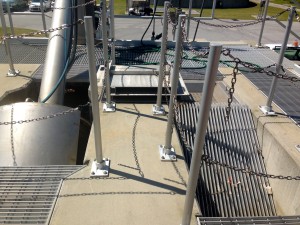
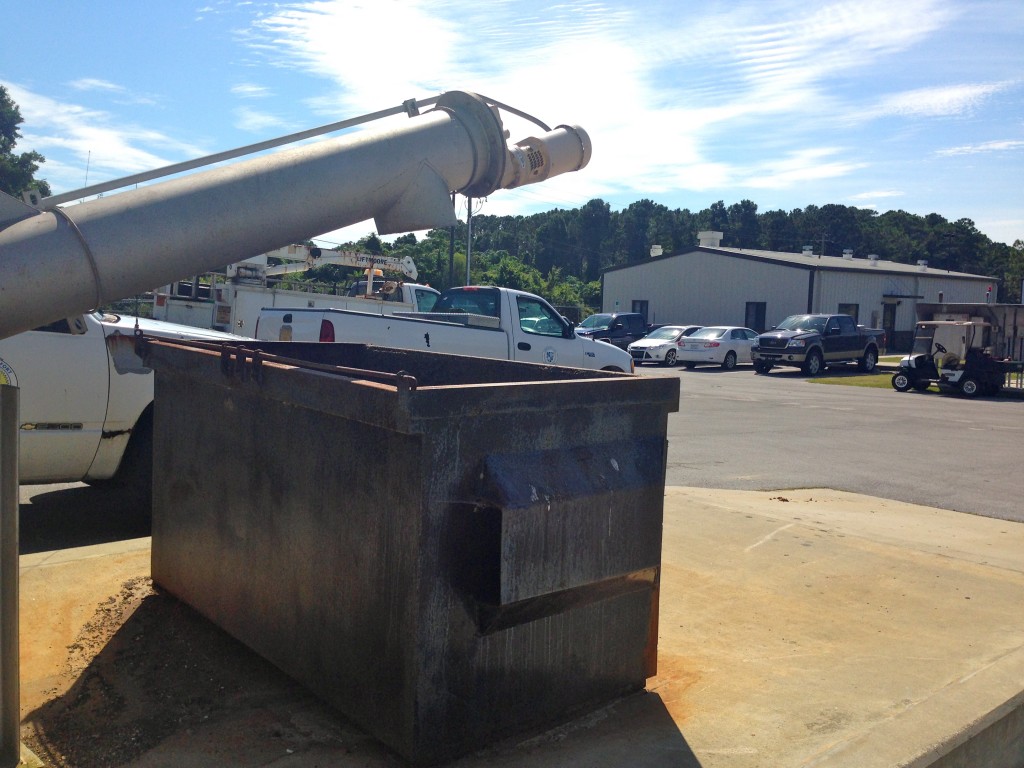
3) Settling and aeration
The wastewater travels to the next step where settling and aeration occur, known as the activated sludge process. Bacteria consume organic matter and nutrients in the wastewater, creating more bacteria as a result. They consume oxygen to digest this organic matter, so oxygen from air is introduced by mixing the wastewater with paddle wheels (the aeration process). It is crucial that bacteria break down the organic matter because otherwise it would be discharged to a water body and consumed by bacteria in the environment, leading to depleted oxygen levels in the water. Nutrients must also be removed to prevent eutrophication in the receiving water body. A portion of the sludge is recycled back to the start of the aeration process to provide enough bacteria for the breakdown of organic matter in the incoming wastewater. When asked how the WWTP’s performance varied over a year, Donovan said that the plant has good performance year-round and there is no need to add additional bacteria. However, in colder temperatures the bacteria are less active. In winter the sludge can’t be recycled as many times as it can in warmer temperatures, and therefore more sludge is sent to the digesters (step 7).
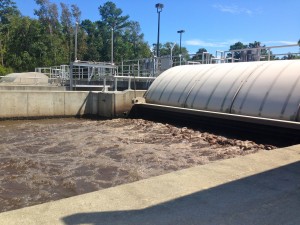
4) Secondary clarification
The mix of wastewater and leftover sludge moves to the clarifier, where solids settle out. The water moves on to a sand filter (step 5), while the solids are swept with a large rotating arm and are pumped to the digesters (step 7).

5) Filtration
The water from the clarifiers is filtered through packed sand to remove any leftover solids, then sent to the chlorination tank.
6) Chlorination and dechlorination
The filtered water is chlorinated and winds around concrete baffles to create a 30-minute contact time of chlorine with the water. Chlorine kills bacteria and other potential pathogens. To remove the chlorine before discharging the water, sodium bisulfite is added. Finally, the water is aerated to increase the dissolved oxygen (at least 5 mg/L is the requirement). The water is discharged to Taylor’s Creek, next to a “No Swimming” sign.
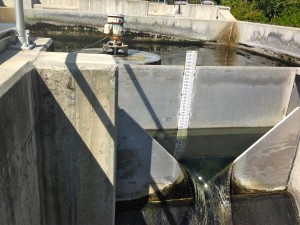
7) Digestion
This plant uses aerboic digesters, which do not produce methane like anaerobic digesters (see previous blog post). The sludge enters the digesters where it is aerated and bacteria continue consuming the waste. Once the solids reach a concentration of 1.2 mg/L, aeration stops and the sludge is allowed to settle. The leftover water is pumped back to the aeration tank where it goes through the treatment process again.


8) Water removal
The settled solids from the aerobic digesters are about 16% water. The solids are sent through a belt filter press that squeezes this water out. The product is Class B biosolids, which are picked up and managed by another company. Class B biosolids may contain pathogens and face stricter regulations that Class A biosolids, but are still deemed okay for land application such as on animal feed crops. The sterilization process required to create Class A biosolids is outside the budget of the Beaufort WWTP. Much research and debate has focused on the land application of biosolids, in addition to wastewater discharge, because of untreated “emerging contaminants” within them. For example, these include ibuprofen and other pharmaceuticals, flame retardants, endocrine disrupters from birth control, triclosan from antibacterial soaps, and a suite of compounds from personal care products like shampoo and laundry detergent. Although these compounds are not yet regulated or treated, research into their environmental and health effects, and potential treatment solutions, is occurring.

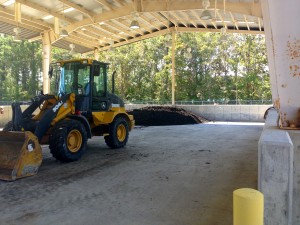
We were very grateful that Donovan shared his time and knowledge. Although the treatment plant conjured up some images of Charlie and the Chocolate Factory for some of us, I think we all became more intimately aware that whatever we use that eventually goes down a drain will end up at the treatment plant and in Taylor’s Creek in a matter of about 10 days.

“Well I love that dirty water, oh [Beaufort] you’re my home.”
